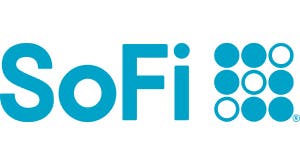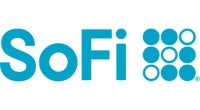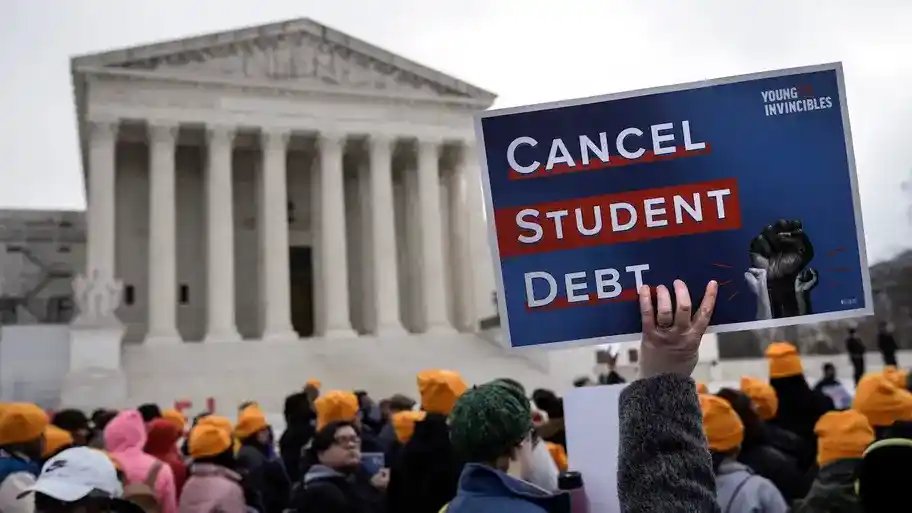Smart Option Student Loan® for Undergraduate Students and graduate loans
The Private Student Loan comparison chart displays combined APRs and loan terms for our loan products. See below for APR ranges and the loan terms for each loan product.
Lowest rates shown include the auto debit discount.
Undergraduate loan: Variable rates: 5.37% - 15.70% APR and Fixed rates: 4.25% – 15.49% APR with the loan term of 10-15 years. Lowest rates shown include the auto debit discount.
Advertised APRs for undergraduate students assume a $10,000 loan to a student who attends school for 4 years and has no prior Sallie Mae-serviced loans. Interest rates for variable rate loans may increase or decrease over the life of the loan based on changes to the 30-day Average Secured Overnight Financing Rate (SOFR) rounded up to the nearest one-eighth of one percent. Advertised variable rates are the starting range of rates and may vary outside of that range over the life of the loan. Interest is charged starting when funds are sent to the school. With the Fixed and Deferred Repayment Options, the interest rate is higher than with the Interest Repayment Option and Unpaid Interest is added to the loan’s Current Principal at the end of the grace/separation period. To receive a 0.25 percentage point interest rate discount, the borrower or cosigner must enroll in auto debit through Sallie Mae. The discount applies only during active repayment for as long as the Current Amount Due or Designated Amount is successfully withdrawn from the authorized bank account each month. It may be suspended during forbearance or deferment.
Graduate and MBA loans: Variable rates: 5.37% - 14.97% APR and Fixed rates: 4.25% – 14.48% APR with the loan term of 15 years. Lowest rates shown include the auto debit discount.
Advertised APRs for Graduate School Loan and MBA Loans assume a $10,000 loan with a 2-year in-school period. Interest rates for variable rate loans may increase or decrease over the life of the loan based on changes to the 30-day Average Secured Overnight Financing Rate (SOFR) rounded up to the nearest one-eighth of one percent. Advertised variable rates are the starting range of rates and may vary outside of that range over the life of the loan. Interest is charged starting when funds are sent to the school. With the Fixed and Deferred Repayment Options, the interest rate is higher than with the Interest Repayment Option and Unpaid Interest is added to the loan’s Current Principal at the end of the grace/separation period. To receive a 0.25 percentage point interest rate discount, the borrower or cosigner must enroll in auto debit through Sallie Mae. The discount applies only during active repayment for as long as the Current Amount Due or Designated Amount is successfully withdrawn from the authorized bank account each month. It may be suspended during forbearance or deferment.
Medical loan: Variable rates: 5.37% - 14.96% APR and Fixed rates: 4.25% - 14.46% APR with the loan term of 20 years. Lowest rates shown include the auto debit discount.
Advertised APRs for Medical School Loan assume a $10,000 loan with a 4-year in-school period. Interest rates for variable rate loans may increase or decrease over the life of the loan based on changes to the 30-day Average Secured Overnight Financing Rate (SOFR) rounded up to the nearest one-eighth of one percent. Advertised variable rates are the starting range of rates and may vary outside of that range over the life of the loan. Interest is charged starting when funds are sent to the school. With the Fixed and Deferred Repayment Options, the interest rate is higher than with the Interest Repayment Option and Unpaid Interest is added to the loan’s Current Principal at the end of the grace/separation period. To receive a 0.25 percentage point interest rate discount, the borrower or cosigner must enroll in auto debit through Sallie Mae. The discount applies only during active repayment for as long as the Current Amount Due or Designated Amount is successfully withdrawn from the authorized bank account each month. It may be suspended during forbearance or deferment.
Law loan: Variable rates: 5.37% - 14.97% APR and Fixed rates: 4.25% - 14.47% APR with the loan term of 15 years. Lowest rates shown include the auto debit discount.
Advertised APRs for Law School Loan assume a $10,000 loan with a 3-year in-school period. Interest rates for variable rate loans may increase or decrease over the life of the loan based on changes to the 30-day Average Secured Overnight Financing Rate (SOFR) rounded up to the nearest one-eighth of one percent. Advertised variable rates are the starting range of rates and may vary outside of that range over the life of the loan. Interest is charged starting when funds are sent to the school. With the Fixed and Deferred Repayment Options, the interest rate is higher than with the Interest Repayment Option and Unpaid Interest is added to the loan’s Current Principal at the end of the grace/separation period. To receive a 0.25 percentage point interest rate discount, the borrower or cosigner must enroll in auto debit through Sallie Mae. The discount applies only during active repayment for as long as the Current Amount Due or Designated Amount is successfully withdrawn from the authorized bank account each month. It may be suspended during forbearance or deferment.
Although we do not charge a penalty or fee if you prepay your loan, any prepayment will be applied as outlined in your promissory note—first to Unpaid Fees and costs, then to Unpaid Interest, and then to Current Principal.
Only the borrower may apply for cosigner release. To do so, they must first meet the age of majority in their state and provide proof of graduation (or completion of certification program), income, and U.S. citizenship or permanent residency (if their status has changed since they applied). In the last 12 months, the borrower can’t have been past due on any loans serviced by Sallie Mae for 30 or more days or enrolled in any hardship forbearances or modified repayment programs. In addition, the borrower must have paid ahead or made 12 on-time principal and interest payments on each loan requested for release. The loan can’t be past due when the cosigner release application is processed. The borrower must also demonstrate the ability to assume full responsibility of the loan(s) individually and pass a credit review when the cosigner release application is processed that demonstrates a satisfactory credit history including but not limited to no: bankruptcy, foreclosure, student loan(s) in default or 90-day delinquencies in the last 24 months. Requirements are subject to change.
For applications submitted directly to Sallie Mae, loan amount cannot exceed the cost of attendance less financial aid received, as certified by the school. Applications submitted to Sallie Mae through a partner website will be subject to a lower maximum loan request amount. Miscellaneous personal expenses (such as a laptop) may be included in the cost of attendance for students enrolled at least half-time.
3 repayment options: Deferred payment; $25 Fixed repayment; Interest repayment:
Smart Option Student Loan: Examples of typical costs for a $10,000 Smart Option Student Loan with the most common fixed rate, fixed repayment option, 6-month separation period, and two disbursements: For a borrower with no prior loans and a 4-year in-school period, it works out to a 10.28% fixed APR, 51 payments of $25.00, 119 payments of $182.67 and one payment of $121.71, for a Total Loan Cost of $23,134.44. For a borrower with $20,000 in prior loans and a 2-year in-school period, it works out to a 10.78% fixed APR, 27 payments of $25.00, 179 payments of $132.53 and one payment of $40.35 for a total loan cost of $24,438.22. Loans that are subject to a $50 minimum principal and interest payment amount may receive a loan term that is less than 10 years. A variable APR may increase over the life of the loan. A fixed APR will not.
Graduate Loan: Example of a typical transaction for a $10,000 Graduate School Loan with the most common fixed rate, Fixed Repayment Option, and two disbursements. For borrowers with a 27-month in-school and separation period, it works out to 14.30% fixed APR, 27 payments of $25.00, 178 payments of $172.22 and one payment of $115.59, for a total loan cost of $31,445.75. Loans that are subject to a $50 minimum principal and interest payment amount may receive a loan term that is less than 15 years. A variable APR may increase over the life of the loan. A fixed APR will not.
Medical Loan: Example of a typical transaction for a $10,000 Medical School Loan with the most common fixed rate, Fixed Repayment Option, and two disbursements. For borrowers with a 81-month in-school and separation period, it works out to 10.71% fixed APR, 81 payments of $25.00, 238 payments of $175.31 and one payment of $89.74, for a total loan cost of $43,838.52. Loans that are subject to a $50 minimum principal and interest payment amount may receive a loan term that is less than 20 years. A variable APR may increase over the life of the loan. A fixed APR will not.
Law Loan: Example of a typical transaction for a $10,000 Law School Loan with the most common fixed rate, Fixed Repayment Option, and two disbursements. For borrowers with a 42-month in-school and separation period, it works out to 11.44% fixed APR, 42 payments of $25.00, 179 payments of $155.95 and one payment of $57.28, for a total loan cost of $29,022.33. Loans that are subject to a $50 minimum principal and interest payment amount may receive a loan term that is less than 15 years. A variable APR may increase over the life of the loan. A fixed APR will not.
MBA Loan: Example of a typical transaction for a $10,000 MBA Loan with the most common fixed rate, Fixed Repayment Option, and two disbursements. For borrowers with a 27-month in-school and separation period, it works out to 14.30% fixed APR, 27 payments of $25.00, 178 payments of $172.22 and one payment of $115.59, for a total loan cost of $31,445.75. Loans that are subject to a $50 minimum principal and interest payment amount may receive a loan term that is less than 15 years. A variable APR may increase over the life of the loan.
We encourage students and families to start with savings, grants, scholarships, and federal student loans to pay for college. Evaluate all anticipated monthly loan payments, and how much the student expects to earn in the future, before considering a private student loan.
Loans for Undergraduate & Career Training Students are not intended for graduate students and are subject to credit approval, identity verification, signed loan documents, and school certification. Student must attend a participating school. Student or cosigner must meet the age of majority in their state of residence. Students who are not U.S. citizens or U.S. permanent residents must reside in the U.S., attend school in the U.S., apply with a creditworthy cosigner (who must be a U.S. citizen or U.S. permanent resident), and provide an unexpired government-issued photo ID. Requested loan amount must be at least $1,000.
Graduate School Loan and Graduate School Loan for Health Professions are for graduate students at participating degree-granting schools and are subject to credit approval, identity verification, signed loan documents, and school certification. Student or cosigner must meet the age of majority in their state of residence. Students who are not U.S. citizens or U.S. permanent residents must reside in the U.S., attend school in the U.S., apply with a creditworthy cosigner (who must be a U.S. citizen or U.S. permanent resident), and provide an unexpired government-issued photo ID. Requested loan amount must be at least $1,000.
Medical School Loans are for graduate students in an M.D., D.O., D.V.M., V.M.D., or D.P.M. program at participating degree-granting schools and are subject to credit approval, identity verification, signed loan documents, and school certification. Graduate Certificate/Continuing Education coursework is not eligible. Student or cosigner must meet the age of majority in their state of residence. Students who are not U.S. citizens or U.S. permanent residents must reside in the U.S., attend school in the U.S., apply with a creditworthy cosigner (who must be a U.S. citizen or U.S. permanent resident), and provide an unexpired government-issued photo ID. Requested loan amount must be at least $1,000.
Law School Loans are for graduate students in a J.D. or L.L.M. program at participating degree-granting schools and are subject to credit approval, identity verification, signed loan documents, and school certification. Graduate Certificate/Continuing Education coursework is not eligible. Student or cosigner must meet the age of majority in their state of residence. Students who are not U.S. citizens or U.S. permanent residents must reside in the U.S., attend school in the U.S., apply with a creditworthy cosigner (who must be a U.S. citizen or U.S. permanent resident), and provide an unexpired government-issued photo ID. Requested loan amount must be at least $1,000.
MBA Loans are for graduate students in an M.B.A. program at participating degree-granting schools and are subject to credit approval, identity verification, signed loan documents, and school certification. Student or cosigner must meet the age of majority in their state of residence. Students who are not U.S. citizens or U.S. permanent residents must reside in the U.S., attend school in the U.S., apply with a creditworthy cosigner (who must be a U.S. citizen or U.S. permanent resident), and provide an unexpired government-issued photo ID. Requested loan amount must be at least $1,000.
Information advertised valid as of 06/21/2024.
SLM Corporation and its subsidiaries, including Sallie Mae Bank, are not sponsored by or agencies of the United States of America.
SALLIE MAE RESERVES THE RIGHT TO MODIFY OR DISCONTINUE PRODUCTS, SERVICES, AND BENEFITS AT ANY TIME WITHOUT NOTICE.
Sallie Mae, the Sallie Mae logo, and other Sallie Mae names and logos are service marks if Sallie Mae Bank. All other names and logos used are the trademarks or service marks of their respective owners.
Credible is not the creditor for these loans and is compensated by Sallie Mae for the referral of Sallie Mae loan customers.





















